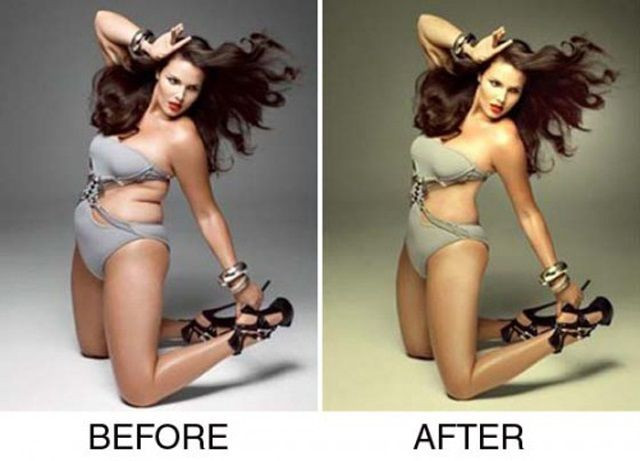Truth In Advertising Gains Support, But Photoshop Regulation Is A Tall Order
Under proposed law, the FTC would be tasked with creating Photoshop guidelines for the media and advertising industry.

Are you tired of airbrushed cover girls and too-skinny fashion models whose images look as if they’ve been glossed over with a coat of primer? Then say hello to the Truth in Advertising Act of 2014, a recently proposed bill aimed at reducing the use of Photoshopped images in advertising and media.
Also known as the “Anti-Photoshop Act,” the bipartisan bill was introduced in March by Rep. Ileana Ros-Lehtinen, R-Fla., along with two Democratic co-sponsors, Reps. Lois Capps of California and Theodore Deutch of Florida. Under the bill’s key provision, the Federal Trade Commission would be tasked with submitting a report to Congress on the prevalence of images that have been “altered to change the physical characteristics of bodies and faces” of people depicted in advertising and other media.
The FTC, according to the bill, would also be forced to come up with a strategy to reduce the use of Photoshopped images, as well as make recommendations for how to construct an appropriate framework to regulate image alteration within the media industry. In other words, making a model look too thin, or her skin too flawless, may soon be a violation of federal standards.
It’s a tall order, to be sure, but media watchdogs, parents' groups and public health officials say government intervention on this issue is long overdue. According to the National Association of Anorexia Nervosa and Associated Disorders (ANAD), popular media since World War II has held up increasingly thinner women as ideal standards of beauty, and those images are having seriously harmful consequences for Americans’ body image. An estimated 1,000 American women die each year as a result of anorexia, and as many as 10 percent of college women suffer from a clinical or near-clinical eating disorder, according to the National Eating Disorders Association. The association also says that approximately 5 percent of women -- and 1 percent of men -- have anorexia nervosa, bulimia nervosa, or binge eating disorder.
Seth Matlins, a former senior executive for CAA and an early champion of truth-in-advertising legislation, launched an online petition to help raise awareness of the issue, calling heavily Photoshopped ads “weapons of mass perfection” with stark casualties. As of Monday afternoon, his petition has attracted more than 33,000 signatures.
While few doubt that the legislation has good intentions, logistical questions are difficult to ignore, particularly in the hands of FTC regulators, who may lack the technical know-how to adequately articulate the nuances of digital photo editing. Simon Dumenco, a writer for AdAge, brought up this very point last month after attending a "truth-in-advertising" conference. “Really, what are we talking about here?” Dumenco wrote. “FTC regulations that somehow say, ‘Thou shall not create a thigh gap where one does not exist’? Or ‘Thou shall not smooth out wrinkles’?”
Even if reasonable standards could be agreed upon, the question of enforceability still looms large. In 2010, Congress certainly had its heart in the right place when it passed the CALM Act, which made it illegal for TV networks to broadcast obnoxiously loud commercials. But more than three years later, the law seems to be having little effect, as pretty much anyone with a TV can attest.
According to the anti-Photoshop bill, the FTC would seek input on regulatory standards from “stakeholders and experts,” that is, people from the mental health, business and consumer-advocacy communities. Reached by phone, Ros-Lehtinen’s office said the congresswoman was not available to offer further details of how the regulations might be crafted.
As for Adobe Systems (NASDAQ:ADBE), while its Photoshop software is synonymous with image alternation in the digital era, the company had no comment regarding the implications of the legislation. In an email, an Adobe spokeswoman said simply that, “One of our core values at Adobe is to conduct ourselves in a responsible, socially conscious manner.”
Read the full text of the legislation here.
Updated: Tuesday, 11:30 a.m.:
Seth Matlins, who authored the Truth in Advertising bill, contacted IBTimes on Tuesday to clarify that the bill would only apply to advertising and commercial media. (The wording in the bill says “advertising and other media.”) Editorial images, which are subject to stronger First Amendment protections, would not be affected under the proposed law.
Got a news tip? Email me. Follow me on Twitter @christopherzara.
© Copyright IBTimes 2024. All rights reserved.






















